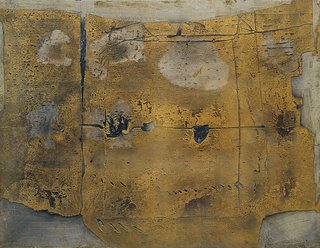Strategies: the gold you bring with you to the workplace, the Kunst in the Kapital = Kunst formula. But don't fear, I'm not going to paint the scene overly rosy for ya. Strategies are a double edge sword, since they are also the habits you carry around that aren't so useful, after all. A strategy can also be the thing that wakes you up in the middle of the night terrified. Or a strategy might make you succumb to certain unhealthy or antisocial behaviors. A strategy can make you feel bad.

Or it can make you capable of amazing things. In fact, in NLP lingo, strategies are the same as capabilities.
Another thing to consider is that the sum of your strategies result in your complete life experience from day to day, they result in your beliefs, and your feelings as well. They are your world.
When little Johnny was much younger, still in high school, he had a terrible array of strategies that made him feel awful most of the time. He was living in a very gloomy and unlit tunnel made up of his accumulated beliefs and ways of reacting to the world. We don't need to elucidate the source, or the details of this tunnel, just point out that it existed, in him, or in his relationship to the world and himself. It was considered very dangerous for people with emotional state management issues like his to experiment with particular types ofpsychototropic substances, for instance, but that's just what he did. And you know what, he felt much better often afterwards, and was more interested in things around him, even things he was subjected to at school. Go figure.
But remember what I said in an earlier post: that strategies are made up of linked sensory processes, sometimes in sequence, sometimes looped or in parallel. To subtly change certain variables in one's inner sensory computations is sometimes enough to change the shape of the entire system. And the result can be so intense that it can be confused with a religious liberation of sorts. So watch out, be careful, don't dabble too much and stray from that bored and frightened little burrow you've found yourself in, or all hell might break loose.
And that's exactly what most of you have been doing. Me too, for so long, and still, quite often.
Your strategies are the gold you bring to your day job, they are what make the world go round. If I had my way, you and the rest of the world would recognize that: that you, and your wits, conscious and unconscious processes, are more valuable than all the oil fields, factories, monetary investments, ball parks in the entire world. They wouldn't be worth a damn, wouldn't be possible without you, valuating them, figuring out how to make them happen.
Remember that when you go to work each day. That's what you have to understand in order to start.
And lastly, strategies, for better or worse, are the ongoing poetry of our fictionalized selves and lives we lead.
Another thing to consider is that the sum of your strategies result in your complete life experience from day to day, they result in your beliefs, and your feelings as well. They are your world.
When little Johnny was much younger, still in high school, he had a terrible array of strategies that made him feel awful most of the time. He was living in a very gloomy and unlit tunnel made up of his accumulated beliefs and ways of reacting to the world. We don't need to elucidate the source, or the details of this tunnel, just point out that it existed, in him, or in his relationship to the world and himself. It was considered very dangerous for people with emotional state management issues like his to experiment with particular types ofpsychototropic substances, for instance, but that's just what he did. And you know what, he felt much better often afterwards, and was more interested in things around him, even things he was subjected to at school. Go figure.
But remember what I said in an earlier post: that strategies are made up of linked sensory processes, sometimes in sequence, sometimes looped or in parallel. To subtly change certain variables in one's inner sensory computations is sometimes enough to change the shape of the entire system. And the result can be so intense that it can be confused with a religious liberation of sorts. So watch out, be careful, don't dabble too much and stray from that bored and frightened little burrow you've found yourself in, or all hell might break loose.
And that's exactly what most of you have been doing. Me too, for so long, and still, quite often.
Your strategies are the gold you bring to your day job, they are what make the world go round. If I had my way, you and the rest of the world would recognize that: that you, and your wits, conscious and unconscious processes, are more valuable than all the oil fields, factories, monetary investments, ball parks in the entire world. They wouldn't be worth a damn, wouldn't be possible without you, valuating them, figuring out how to make them happen.
Remember that when you go to work each day. That's what you have to understand in order to start.
And lastly, strategies, for better or worse, are the ongoing poetry of our fictionalized selves and lives we lead.



